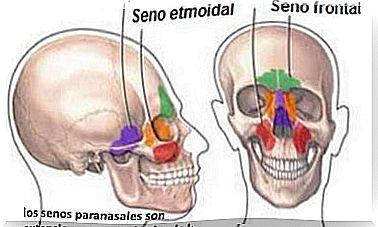5 Keys To Trigeminal Neuralgia
There are many types of pain and, without a doubt, each of them is unique in its intensity and characteristics. However, it is common to describe trigeminal neuralgia as the “ worst pain in the world “.
Trigeminal neuralgia is a painful tic, like an electric shock that radiates to the facial area that extends from the cheekbone to the chin.
It is always useful to know these types of medical conditions, that is why we want to explain the main characteristics of trigeminal neuralgia through 5 keys.
1. What is trigeminal neuralgia
Trigeminal neuralgia is a type of chronic pain that affects a specific nerve, which gives it its name, as stated in this information from the United States National Library of Medicine. We are talking about the fifth cranial nerve and one of the longest in our head.
- Trigeminal neuralgia appears in the form of “tics” of strong intensity. They are short intervals, between two seconds and a minute, where the person is paralyzed, unable to chew or even speak because of the pain.
- It is short-lived, but trigeminal neuralgia can sometimes progress and last longer and longer.
- This nerve, in turn, has three branches that cross the visual area, the scalp, the forehead, and the front of the head.
- This explains why people experience pain in the jaw, cheek, lips, teeth, and even gums.
The culprit is a blood vessel
- The origin of this neuralgia is in a blood vessel that compresses the trigeminal nerve when it exits the brain stem.
- The sheath that surrounds the nerve wears out, either due to the passage of time or due to a disease that deteriorates the nerve’s own myelin.
- This progressive wear and tear on the trigeminal nerve causes it to send abnormal signals to the brain.
It is the most intense headache we can experience.
2. What symptoms do you present?
- The episodes begin acutely, briefly but like an “electric shock.” The person may be surprised by not knowing what has happened to him, however, he does not give it importance because it is brief.
- Little by little the attacks are repeated. All you have to do is touch your face, chew, speak, or brush your teeth for the “discharge” to appear.
- Pain attacks last from a few seconds to several minutes.
- The episodes can last for days and then disappear to return after a month, or last for several months in a row.
- The pain, as we have already noted, radiates to the cheek, jaw, teeth, gums, lips or, less frequently, to the eyes and forehead.
- The pain usually affects one side of the face.
- Attacks that become more frequent and intense over time.
3. Who is most commonly affected by trigeminal neuralgia?

- Trigeminal neuralgia especially affects people over 50, according to this report from the National Institute of Neurological Disorders and Stroke (United States). However, it should be noted that it can also appear in young people.
- The disorder is more common in women than in men.
- It is usually hereditary.
4. What tests are you going to do?
The medical diagnosis of trigeminal neuralgia is based on three key points that will allow it to be differentiated, for example, from a migraine:
- Type of pain: if it is brief, we are talking about trigeminal neuralgia.
- Location. Knowing the parts of the face that are affected by pain is essential to diagnose it.
- The triggers. This type of neuralgia reacts with the stimulation of light to the cheeks, with the act of chewing and speaking.
Once we have communicated these points to our doctor, the specialist may order the following tests:
- A neurological exam
- An MRI.
5. How is trigeminal neuralgia treated?

Pharmacotherapy
Our doctors will always indicate the best treatment for us. It should be said that with this type of neuralgia, simple anti-inflammatory or analgesic drugs do not work.
- Anticonvulsants are used to block the nerve firing of this brain structure.
- Also, the use of tricyclic antidepressants are effective when pain is constant.
Surgical approach
If the drugs do not work, it would go to a neurosurgical procedure.
The techniques can range from simple interventions to more complex operations, and would be the following:
- A rhizotomy is a procedure where certain nerve fibers are destroyed to block pain.
- The compression balloon is a simple and fast technique. A cannula is inserted through which a small balloon passes that is intended to compress the trigeminal nerve to reduce its stimulation and pain.
- The glycerol injection is another technique for isolating the fibers of the trigeminal nerve and thereby prevent these painful shock as.
Finally, and if the above strategies do not work, what is known as microvascular decompression is carried out, as stated in this study carried out by the Neurosurgery Service of the Padilla Hospital (Argentina). It is a more delicate intervention but, at the same time, the most effective. Thanks to her this type of neuralgia does not reappear.
To conclude, what is known as “the worst pain in the world” has a solution. It is just about being patient, following the advice of our doctors and going through different techniques until we find the one that offers us an authentic quality of life.
The most important thing is that if we feel any symptoms that we have mentioned previously, we go to a specialist to diagnose what happens to us and help us overcome it.








